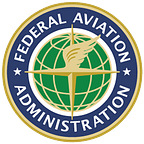Helicopters and Drones
By Gene Trainor, FAA Communications Specialist/Technical Writer
Go to any park nowadays and you will likely see drones, or unmanned aircraft systems (UAS). It all seems so normal. Just 10 years ago, the skies were largely free of UAS. Now, however, the surging popularity of drones presents some challenges to the helicopter community. To help foster safe integration, the FAA has developed rules to help remote pilots navigate the skies safely. Over the next two years, UAS operators and manufacturers face deadlines to install remote identification technology that will help authorities better track UAS.
Readers of this column may recall FAA Safety Briefing’s May/June 2017 issue about some specific UAS airspace conflicts. These prevented public safety helicopter teams from firefighting and conducting a rescue in California, and UAS interferences resulted in cancellation of medical flights in Texas.
Such incidents persist. In November, the FBI arrested a man after his UAS crashed into a Los Angeles Police Department helicopter. The helicopter was responding to a crime scene when the collision occurred, forcing an emergency landing. The drone damaged the helicopter’s nose, antenna, and bottom cowlings. A vehicle was also damaged as the drone fell from the sky.
The FAA receives more than 100 sightings of improper drone operations each month. The FAA has warned that operating drones around airplanes, helicopters, and airports is dangerous and illegal and that violators face stiff fines and criminal charges.
Identifying violators will get easier. On Jan. 15, the FAA issued a final rule that requires all UAS weighing over 0.55 pounds to have remote identification (Remote ID) technology installed, unless the drone is operated at an FAA-Recognized Identification Area (FRIA) sponsored by a community-based organization or educational institution. Remote ID allows the FAA and other authorities to identify a UAS, its location, the time of operation, and assists in determining whether the drone poses a security risk. UAS manufacturers must install this technology no later than Sept. 16, 2022. No UAS that is required to have Remote ID can operate in the United States after Sept. 16, 2023 without this technology installed, unless the UAS is flown in a FRIA.
“In its most basic form, Remote ID can be described as a ‘digital license plate’ for UAS,” says Ann Cihon, a program manager with the FAA’s UAS Integration Office. “Remote ID is necessary to address aviation safety and security issues regarding UAS operations in the National Airspace System.”
Drones clearly offer many benefits. The government-industry United States Helicopter Safety Team (USHST) studied five fatal accidents involving cattle mustering, frost protection, cherry orchard drying, and low-altitude law enforcement search operations and concluded that UAS could supplement helicopter operations in these areas and help reduce the risk for manned operations. The USHST also recommended UAS for some aerial applications, transmission line inspections, pipeline patrols, and wind turbine inspections.
Here are some tips from the USHST to avoid airborne conflicts with a UAS.
🚁 Use available helicopter lighting to increase visibility for UAS operators.🚁 When climbing, consider a cruise climb that maximizes visibility. Helicopters are particularly vulnerable to a UAS strike when they lift off or land.🚁 Listen to radio reports, including on 121.5 MHz, of UAS sightings.🚁 Conduct a high reconnaissance flight at off-airport landing locations to provide a visual and aural warning to nearby UAS operators.🚁 Keep airspeeds at or near the best autorotation speed when flying low; flying higher improves safety margins. 🚁 If you need to move quickly to avoid colliding with a drone, note that windscreens, jet intakes, and rotor systems are particularly vulnerable to drone strikes. You could actually increase risk of a strike, depending on how you maneuver to evade a drone.🚁 Report UAS collisions or near misses to an FAA Flight Standards District Office or the appropriate Air Traffic Control facility.
For a more complete list, visit bit.ly/USHSTDroneBulletin and scroll down to BULLETIN Drones 4.
Gene Trainor is a communications specialist/technical writer with the FAA Compliance and Airworthiness Division and a Rotorcraft Collective team member.
